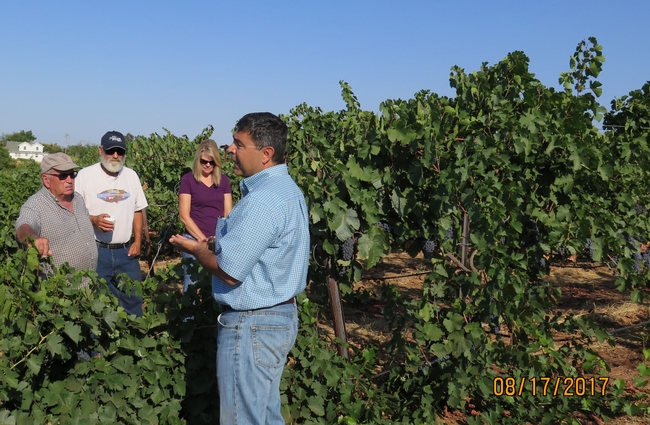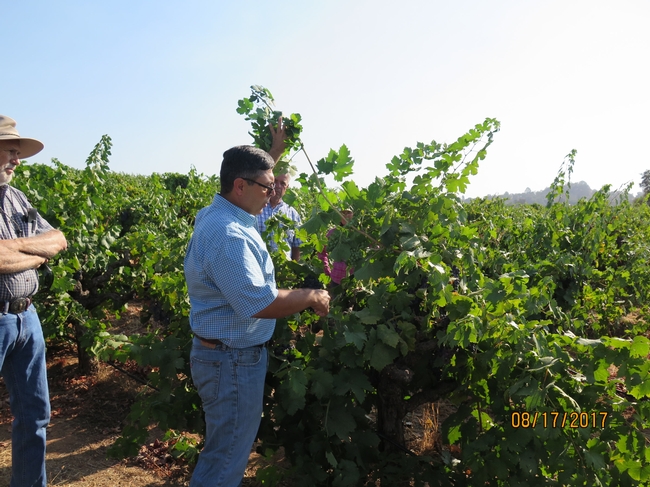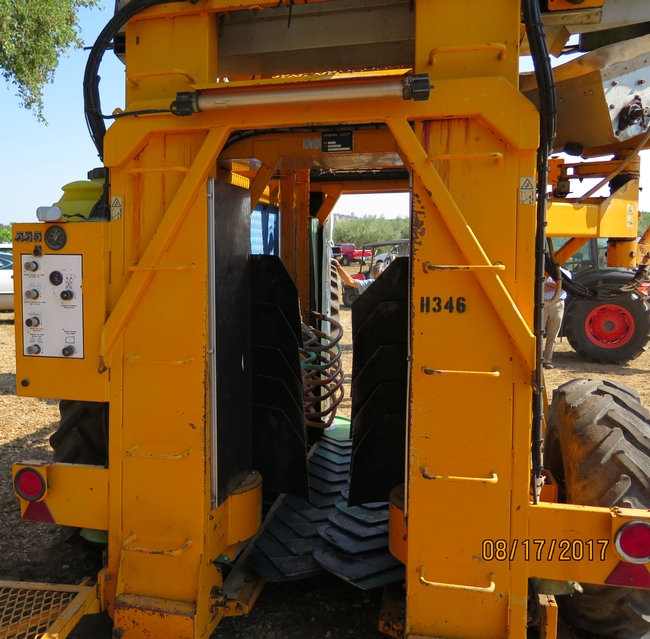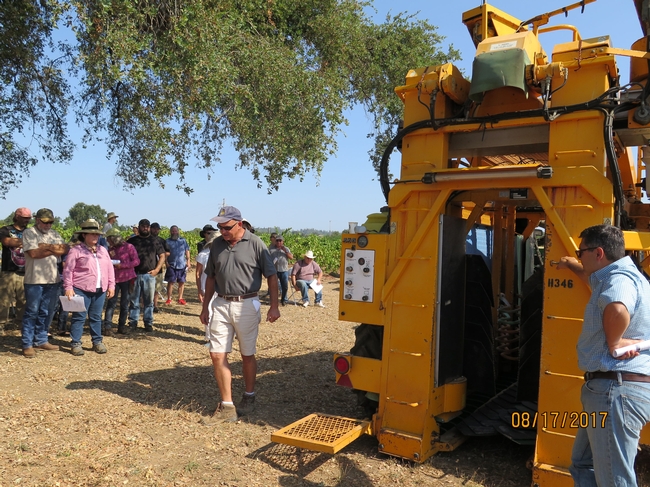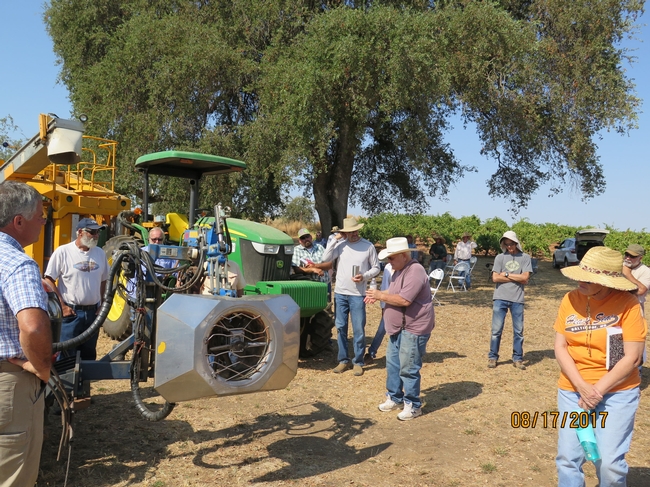Dr. Kaan Kurtural describes transitioning a vineyard from head to cordon trained.
The Charbono block that Dick had grafted over had a few shoots retained down on the trunk at the graft union which will need to come off for mech. harvest-these shoots were left to help devigorate the top so that the grafted bud wouldn't be shot out with spring flush. Kurtural noted that when grafting over from established rootstocks (this block was on 110R), there can be alot of vigor transferred to the scion in spring. Grafting over can also take place in fall, perhaps a safer time to make large cuts and avoid infection from canker disease. Vines need at least 10 days to grow a graft union and you want 6 inches of lignified shoot growth before fall frost hits. Of course, it isn't necessary toDemonstrating choosing a cane to lay down
The group then moved to take a look at the Gregoire pull behind machine Kevin Steward, vineyard manager with Trinchero Family Estates and Terre D'Oro Winery (located right across the street) generously brought over for the group to take a look at. The Gregoire had a "bow rod" head type of picking system, which means the fruit is shaken off of the vines using adjustable nylon rods. The berries fall down (without the rachis) onto Lexan or Nylon overlapping catcher plates that open and close as needed to work around vine trunks and trellis posts. The berries are then moved to the top with either a bucket or belt system. Trinchero has been using their machines for several years and is happy with The bow rods inside the Gregoire pull behind are adjustable and the intensity of vibration can also be adjusted to minimize MOG (Material Other than Grapes).
Kevin Steward and Trinchero's Gregoire Bow Rod Machine
Lastly, we took a look at Dick's leaf remover-an Italian machine that sucks in the leaves and shreds them and spits them out the back. Dick loves this machine and uses it the day of harvest to cut "windows" into the thick canopies of his famously popular Barbera vines-making it easier for the pickers to find the fruit.
Is mechanization the answer for the labor issues facing the foothills? Looking at the numbers, it appears to pencil out, but some blocks are still too small, and too steep, and some winemakers and growers still prefer hand harvested fruit. As long as their are hands to do the harvesting.
Dick Cooper with his Italian Leaf Remover
